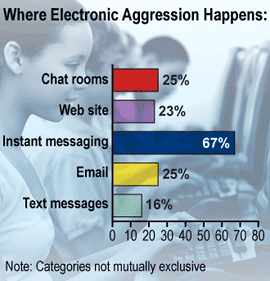 |
| English: the picture consist of articles on bullying, I obtained it from public domain. (Photo credit: Wikipedia) |
Bullying remains the hottest of hot button issues in special education law. In the first installment of this series, I explained the early cases laying the conceptual groundwork for the proposition that failure to react to bullying can constitute a denial of FAPE under IDEA. In later installments, I have discussed the seminal decision of TK & SK ex rel LK v. New York City Dept of Educ 779 F.Supp.2d 289, 56 IDELR 228 (E.D.N.Y. 4/25/2011). This case is important not just because it analyzes special education law principles involving bullying, but also because it provides a thorough review of the social science literature on bullying. You should read this case and you can do so here. (NOTE: What follows is a discussion of TK I. Please note that we have subsequently done a post on the District Court's decision on the appeal of the SRO decision after the court's remand, or TK II. You can read that post here. TK I remains good law.) #bullying
Here is more from the court...these are not my words:
2. Distinguishing Bullying From Horseplay
Every disagreement among children does not amount to bullying. "What distinguishes bullying from other forms of childhood aggression, whether a hard-fought basketball game or rough-and-tumble play, is unequal and coercive power." Philip C. Rodkin, Bullying and Children's Peer Relationships, in White House Conference on Bullying Prevention, at 33 (March 10, 2011), available at http://www. stopbullying.gov/references/white_house_conference/index.html. See also, Olweus, supra, at 10 ("It must be stressed that the term bullying is not . . . used when two students of approximately the same strength . . . are fighting or quarreling."). Increased power need not be actually present, but there must be at least a perceived advantage for the bully either physical or psychological. Id.; Bonnie Bell Carter and Vicky G. Spencer, "The Fear Factor
and Students With Disabilities," 21 Int'l J. of Special Educ. 11, 12 (2006).
[ 779 F.Supp.2d 301 ]
| [ 779 F.Supp.2d 301 ] |
and Students With Disabilities," 21 Int'l J. of Special Educ. 11, 12 (2006).
The bully-victim connection can be viewed as the opposite of a healthy peer relationship. Peers are equals on the same social standing, while a bullying nexus lacks equality of standing. Rodkin, supra, at 33. It is the inequality, abuse, and unfairness associated with bullying that makes it incompatible with what we conceive of as the appropriate "American character." Id.

























